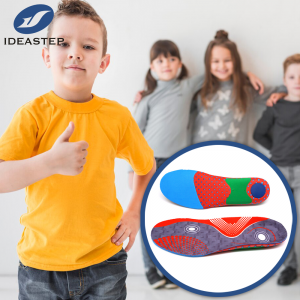
Children’s insoles and adult insoles differ in several ways due to the unique characteristics and needs of growing feet:
- Size and Shape: Children’s insoles are designed to fit smaller feet and correspond to the specific shoe sizes of children. They are typically narrower and shorter compared to adult insoles to accommodate the proportions of children’s feet.
- Arch Support: Children’s feet are not fully developed, and their arches may still be forming. Therefore, children’s insoles often provide milder arch support or a more flexible arch structure to allow for natural development and proper alignment.
- Cushioning and Shock Absorption: Children’s insoles often prioritize cushioning and shock absorption to provide comfort and protect growing feet from impact during physical activities. They may have additional padding or gel inserts to absorb shocks and reduce stress on the feet.
- Growth Adjustability: Some children’s insoles are designed with growth room or adjustable features to accommodate the changing size of children’s feet. These insoles can be modified or trimmed to fit different shoe sizes as the child’s feet grow.
- Materials: Children’s insoles are typically made from lightweight and breathable materials to ensure comfort and prevent excessive sweating or odor. These materials are often chosen to be hypoallergenic and suitable for sensitive skin.
- Durability and Maintenance: Children’s insoles may need to withstand more wear and tear due to the active nature of children. They are often designed to be more durable and easy to clean, as children’s shoes and insoles may require frequent washing.
Therefore, when choosing children’s insoles, it’s important to consider more than just the size of the shoe. These factors should not be overlooked. Expand more related content: https://www.aideastep.com/kids-insoles/.
